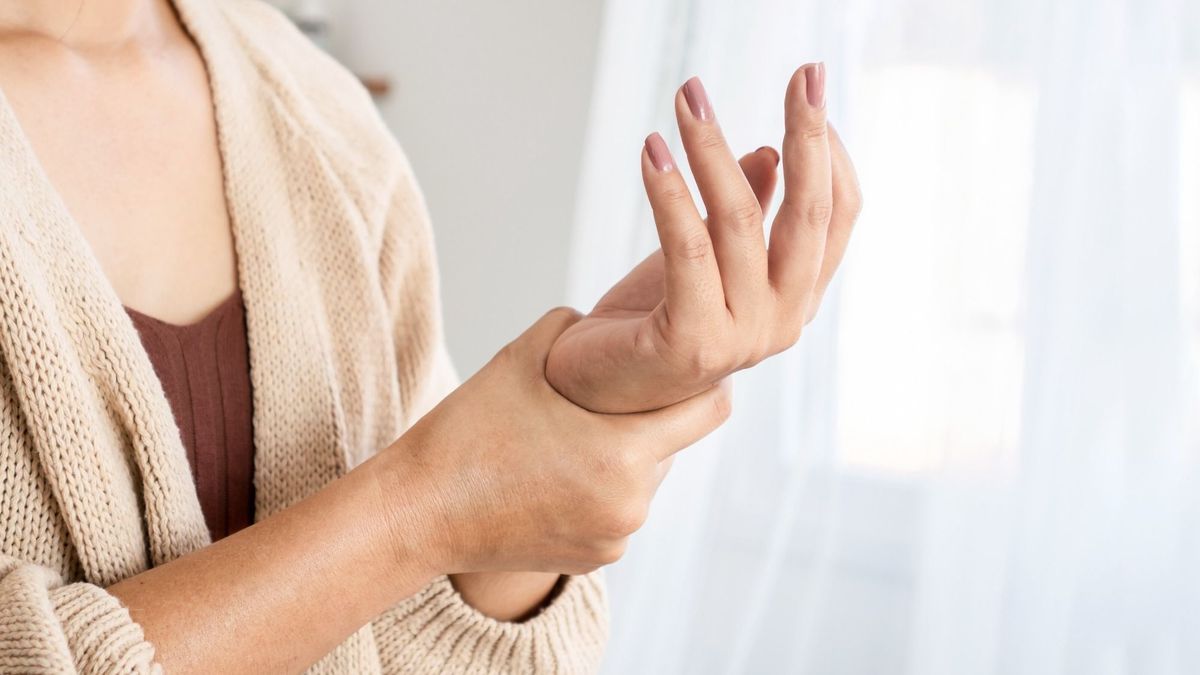
Volkmann syndrome is a rare complication of another syndrome, compartment syndrome, which develops after compression or crushing of the muscles and nerves of the forearm. Understanding Volkmann syndrome, its causes, its symptoms, its treatments therefore implies understanding the compartment syndrome which is at its origin. Explanations from Dr Charles Bijon, specialist in orthopedic surgery and surgery of the hand, shoulder and upper limb at the La Montagne Lambert private hospital (La Garenne-Colombes, 92).
Only the acute form of compartment syndrome can progress to Volkmann syndrome. Chronic compartment syndrome, as can happen in athletes, eventually fades and never leads to Volkmann syndrome.
What is Volkmann syndrome?
To understand Volkmann syndrome, also known as forearm compartment ischemia, you must first understand compartment syndrome, explains Dr. Charles Bijon, specialist in orthopedic surgery and hand surgery. , shoulder and upper limb at the La Montagne Lambert private hospital (La Garenne-Colombes, 92). “Volkmann syndrome is a rare but serious medical complication of acute compartment syndrome.. Surrounded by aponeurosis, an inextensible tissue, the compartments contain muscles, blood vessels and nerves. The greatest number are found in the leg and forearm.
“In the case of acute compartment syndrome, excessive pressure can occur following a traumatic injury: it then results either from a reduction in the volume of the muscular compartment due to too tight and prolonged compression ( bandage, plaster), or an increase in muscle volume due to edema linked to reduced vascularization (ischemia) or hematoma. This reduction in blood supply can cause serious damage to muscle and nerve tissue in the area.”continues the specialist.
Initially described in the hand, Volkmann syndrome can also affect the foot. It is therefore a sequela of compartment syndrome that is poorly managed or taken too late, leading to permanent retraction of the muscles of the forearm or leg. It usually occurs within two to three months after the onset of compartment syndrome.
What causes Volkmann syndrome?
The main causes of Volkmann syndrome are indirect since this syndrome is a complication of compartment syndrome, itself linked to traumatic injuries that compromise blood circulation to the muscles. Some of the most common causes include severe bone fractures, crush injuries, hematomas, infections and even prolonged immobilization of the arm.
Some people, such as children, people in a coma, or those who have suffered severe trauma, are more likely to develop Volkmann syndrome.
What are the symptoms of Volkmann syndrome?
It is essential to recognize the symptoms of compartment syndrome quickly because early diagnosis and immediate treatment are crucial to minimize damage and avoid its progression to Volkmann syndrome. Typical symptoms of compartment syndrome include:
- Severe, persistent pain in the forearm, which can get worse over time. It manifests itself in the form of very violent tension and cramps, resistant to analgesics and changes in position. This pain is aggravated by raising the arm and extending the wrist and fingers;
- Swelling of the forearmoften accompanied by a feeling of tension and heat;
- Muscle stiffness in the affected arm, with difficulty moving fingers and wrist. This motor deficit reflects ischemia and should prompt rapid consultation;
- A loss of sensation in the fingers and the affected hand.
Unlike acute compartment syndrome, Volkmann syndrome is not painful, emphasizes Dr. Charles Bijon. It is characterized by deformation of the hand, with flexion of the wrist and fingers in a claw position and loss of function of the affected limb downstream of the ischemia. “The deformation of the fingers and wrist in the case of Volkmann syndrome of the forearm is irreversible. It can be linked to damage to the flexor muscle compartments, the first affected, or result from nerve paralysis due to fibrosis; the joints become stiff and the muscles retract, leading to permanent deformity.continues the surgeon.
In children, deformations can be more significant when the damage occurs early because bone growth continues unlike that of muscle, thus increasing the deformation, he adds.
How to prevent and treat Volkmann syndrome?
There is no treatment capable of curing Volkmann syndrome. “Treatment will initially be based on rehabilitation and stretching. Splints can also be offered in moderate forms. If these approaches are not enough and the loss of function interferes with daily life, it is possible to consider palliative surgery which consists of lengthening the muscles and tendons. But the results are very modest, with only a 20 to 30% improvement in hand function.”, indicates Dr. Bijon. Arthrolysis, which aims to free the joints, or nerve surgery are also possible but much more complex.
The best approach to Volkmann syndrome is actually prevention. In the event of a forearm injury, regardless of its severity, it is imperative to consult a healthcare professional immediately. The latter should avoid applying a bandage or plaster that is too tight, which could prevent the blood from circulating properly. “In countries like Europe, caregivers are fully trained in the management of compartment syndrome and the prevention of Volkmann syndrome. But this is not always the case in less developed countries.emphasizes Dr. Bijon.
If compartment syndrome appears, the first medical step is to try to restore blood circulation, by removing any extrinsic compression (cast that is too tight for example).
In the absence of rapid improvement, the treatment becomes surgical and consists of an aponeurotomy of the muscular compartments: this surgical procedure aimed at reducing the pressure in the muscular compartments consists of splitting the aponeuroses of the compartments concerned, leaving them open for the duration of the healing and close the skin once the pressure is reduced.
Surgery is immediately followed by rehabilitation sessions to prevent joint stiffness and, in severe cases, surgical interventions to correct hand deformities.
